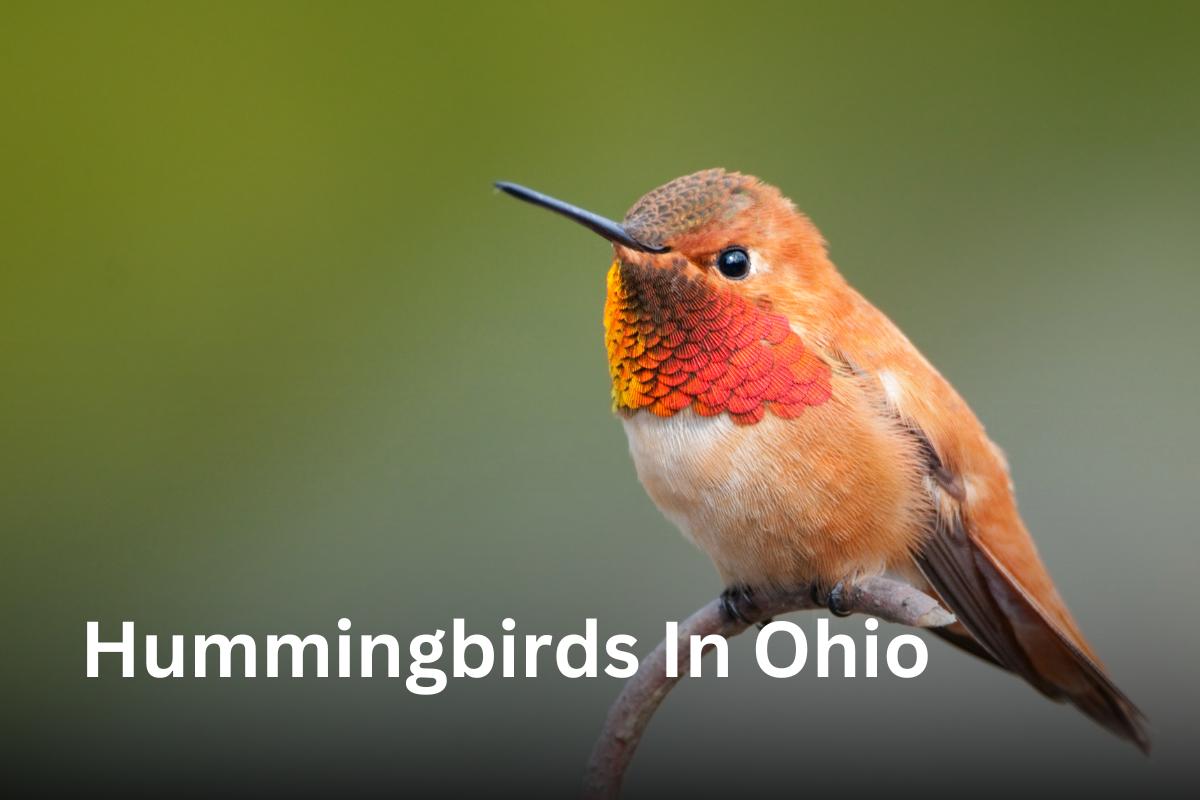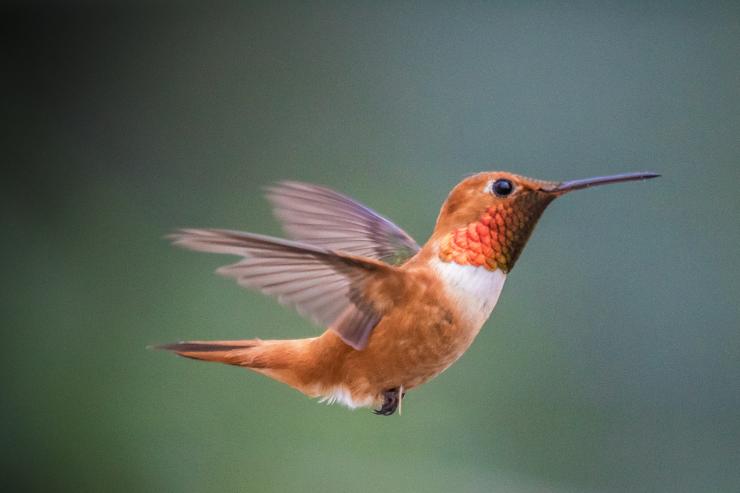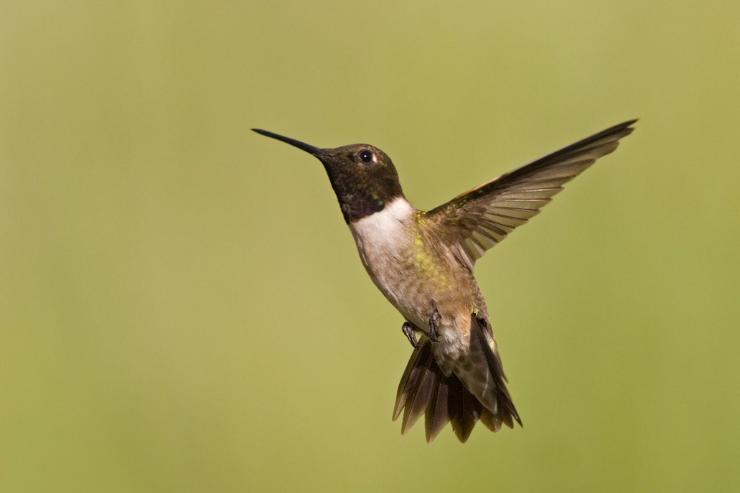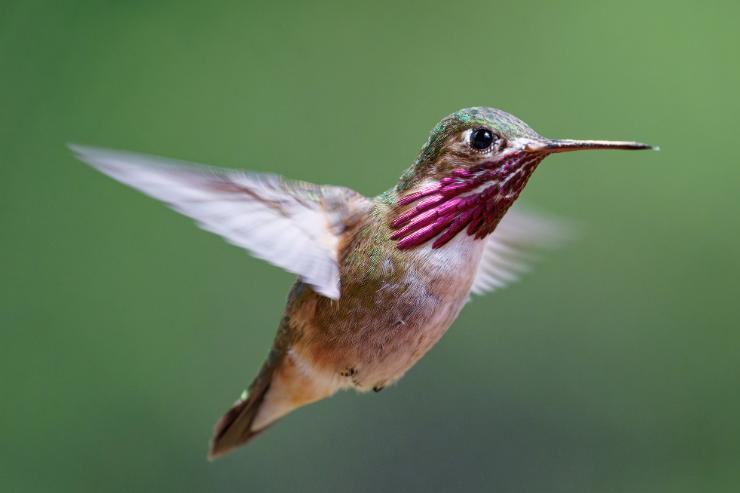Hummingbirds In Ohio

One of the most populated states in the United States is Ohio. The Ohio state is situated in the midwestern region of the United States. It is a state where a wide range of species are found.
As mentioned by the Ohio Bird Records Committee (OBRC), there are 450 species of birds. Among these avian inhabitants species of bird one of them is hummingbirds.
The small captivating hummingbirds are known for their iridescent vibrant plumage and humming sound produced by their rapid wingbeats. They can hover at rapid wing-flapping rates.
In this blog post, we will be exploring the top four fascinating hummingbirds that are found in the state of Ohio. Without any further delay let us go through this article.
List of Hummingbirds In Ohio
- Rufous Hummingbird
- Black-chinned Hummingbird
- Calliope Hummingbird
- Ruby-throated Hummingbird
1. Rufous Hummingbird (Selasphorus rufus)
The rufous hummingbird is a small hummingbird that belongs to the family of Trochilidae.
This lovely bird has a rufous face, white breast, tail, and an iridescent orange-red throat patch in adult males. Particularly, it also has a long, straight, and slender bill.

The male hummingbird has bright orange on their belly. Whereas, the rufous hummingbird female has green, white, and iridescent orange feathers in the middle of the throat.
In addition to females, the immature hummingbirds are also greenish with a rusty-washed flank. The size of female hummingbirds is slightly larger compared to male hummingbirds.
However, the juveniles of rufous hummingbirds are quite similar to the Allen’s hummingbird.
Rufous Hummingbird Size, Wingspan, Weight, Lifespan, Bill, and Breeding Period:
- Size: 2.8–3.5 inches (7–9 cm)
- Wingspan: 4.3 inches (11 cm)
- Weight: 0.071–0.176 ounces (2–5 g)
- Lifespan: three to five years
- Bill: 3.1 inches (8 cm)
- Breeding Period: April to July
The average lifespan of this tiny hummingbird is estimated to be around three to five years. However, the oldest rufous hummingbird has lived for at least eight years and eleven months.
According to the IUCN Red List, the rufous hummingbird was listed from least concern to near threatened in 2018.
Globally, it has been observed that the population of these tiny hummingbirds is declining heavily due to intensified agriculture and pesticides.
Habitat: This hummingbird is a migratory bird that prefers to inhabit the forest edges, mountain meadows, and streamsides. However, a rufous hummingbird male tends to travel earlier than that of a rufous hummingbird female.
From May to September, the rufous hummingbird often migrates toward the lowlands in the Rocky Mountains. The small creature is rarely present in Ohio. As per some of the online sources, each year they are observed in the far north in winter.
Feeding: This small-sized hummingbird is vulnerable to eating insects, birds, and animals. They suck nectar from flowers with the help of their long extendable tongue.
2. Black-chinned Hummingbird (Archilochus alexandri)
The black-chinned hummingbird is a species of bird that is found in a wide range of habitats. The upper parts of the adult males are green and the lower parts are white with a presence of green flanks.
Also, the male hummingbird has a black face with a long pointed straight, and slender bill. Whereas, the female and immature hummingbirds have dull metallic green in the upper parts.

But, they lack throat patches. During the first year, the young ones have a completely new set of feathers.
Black-chinned Hummingbird Size, Wingspan, Weight, Lifespan, and Breeding Period:
- Size: 3.25 inches (8.25 cm)
- Wingspan: 11 cm (4.3 inches)
- Weight: 2.3-4.9 g (0.1-0.2 ounces)
- Lifespan: Upto 10 years
- Breeding Period: Late March to Mid-August
The conservation status of the black-chinned hummingbird is classified as a least concern according to the IUCN Red List.
However, the population of this hummingbird is increasing rapidly every year by around 14.6%. The average
Habitat: Widely, the black-chinned hummingbird is found in orchards, mountains, meadows, chaparral, and woodlands habitat.
It is a migratory hummingbird. It migrates to the western United States and southwestern Canada during the summer season.
Feeding: This beautiful hummingbird also inhabits the shaded canyons and riparian woods. It mainly eats insects and nectar from flowers with its long extendable tongue.
3. Calliope Hummingbird (Selasphorus calliope)
The calliope hummingbird is a small bird that is only a member of the genus Stellula. Previously, its genus name was “little star”.
In adult males, the physical traits possess wine-red streaks on the forget, green flanks, and a dark tail. It has a magenta ray on the throat, a greenish back as well a crown with white underparts.

Regarding female and immature hummingbirds, they have dark streaks on the throat, pink flanks, and a bronze-green back.
However, this enchanting hummingbird resembles the rufous hummingbird and the Allen’s hummingbird.
Calliope Hummingbird Size, Wingspan, Weight, Lifespan, and Breeding Period:
- Size: 2.8–3.9 inches (7–10 cm)
- Wingspan: 4.3 inches (11 cm)
- Weight: 0.071 to 0.106 ounces (2 to 3 g)
- Lifespan: seven years
- Breeding Period: April through June
According to the International Union for Conservation of Nature (IUCN) Red List, the conservation status of the calliope hummingbird is of least concern.
As per the data displayed by the Partners in Flight, there is a slight decline in the population of this species of hummingbird. The oldest Calliope Hummingbird was a female recording the age of at least eight years and one month old.
Habitat: The smallest hummingbird is native to the United States and Canada. Typically, these birds are mostly found in open montane forests, alder thickets, willow, brushy areas, deserts, and meadows.
They breed in Arizona, New Mexico, and northern Mexico during the summer and spring seasons. While in the winter, its breeding ranges in southwestern Mexico, Guatemala, and Belize.
Feeding: The vibrant hummingbirds mainly feed on nectar from flowers and insects. While collecting the nectar from flowering plants, the calliope hummingbird helps to assist in plant pollination.
4. Ruby-throated Hummingbird (Archilochus colubris)
Scientifically, the ruby-throated hummingbird’s name is Archilochus colubris. It is a tiny hummingbird that possesses metallic green on the upper parts and white on the lower parts.
In adults, the bill is long, straight, and slender. This charismatic hummingbird has short legs with no knees, long wings, and a green crown. While the female hummingbirds are golden green in the upper parts and white in the lower parts.

Ruby-throated Hummingbird Size, Wingspan, Weight, Lifespan, Bill, and Breeding Period:
- Size: 2.8-3.5 inches (7-9 cm)
- Wingspan: 3.1 to 4.3 inches (8-11 cm)
- Weight: 2 to 6 g ((0.071 to 0.212 ounces)
- Lifespan: three to five years
- Bill of male: 1.5 to 1.8 cm
- Bill of female: 17 to 21 cm
- Breeding Period: March to July
In 2023, the International Union for Conservation of Nature (IUCN) Red List of Threatened Species listed the ruby-throated hummingbird as the least concern.
In the United States, this hummingbird has its highest population. But, these species of birds are reducing significantly. However, the oldest ruby-throated hummingbird recorded its age of about nine years and one month.
Habitat: The ruby-throated hummingbird is a migratory bird that breeds throughout the year in the eastern United States and southeastern Canada.
Commonly, this hummingbird is found in the forest edges, orchards, deciduous forests, pine forests, and gardens. During the winter season, it migrates to Eastern North America, Mexico, and Florida.
Feeding: Primarily, their main source of diet is nectar from flowers, small insects, and spiders. The ruby-throated hummingbirds contain some part of protein, vitamins, and as well as minerals from small arthropods.
Occasionally, its diet also includes sugar-rich tree sap that is obtained from sapsucker wells. With the use of a long, extendable tongue they eat nectar from flowering trees.
Conclusion:
The beautiful hummingbirds have been able to add a unique charm to Ohio’s landscape with their aerial acrobatics and jewel-like plumage.
From the rufous hummingbird to the ruby-throated hummingbird, each species of hummingbird embodies unique distinctive physical traits, behavior, and habitat.
These charming birds are readily spotted during migration periods across Ohio state of the United States. The presence of these hummingbirds enhances its importance as a habitat for diverse avian habitats.






